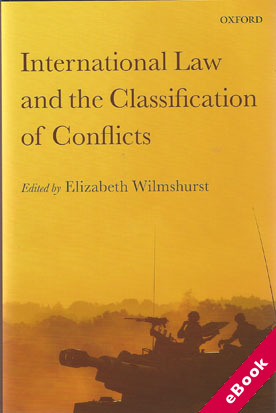
The device(s) you use to access the eBook content must be authorized with an Adobe ID before you download the product otherwise it will fail to register correctly.
For further information see https://www.wildy.com/ebook-formats
Once the order is confirmed an automated e-mail will be sent to you to allow you to download the eBook.
All eBooks are supplied firm sale and cannot be returned. If you believe there is a fault with your eBook then contact us on ebooks@wildy.com and we will help in resolving the issue. This does not affect your statutory rights.
This book comprises contributions by leading experts in the field of international humanitarian law on the subject of the categorisation or classification of armed conflict.
It is divided into two sections: the first aims to provide the reader with a sound understanding of the legal questions surrounding the classification of hostilities and its consequences; the second includes ten case studies that examine practice in respect of classification.
Understanding how classification operates in theory and practice is a precursor to identifying the relevant rules that govern parties to hostilities.
With changing forms of armed conflict which may involve multi-national operations, transnational armed groups and organized criminal gangs, the need for clarity of the law is all-important. The case studies selected for analysis are Northern Ireland, DRC, Colombia, Afghanistan (from 2001), Gaza, South Ossetia, Iraq (from 2003), Lebanon (2006), the so-called war against Al-Qaeda, and future trends.
The studies explore the legal consequences of classification particularly in respect of the use of force, detention in armed conflict, and the relationship between human rights law and international humanitarian law. The practice identified in the case studies allows the final chapter to draw conclusions as to the state of the law on classification.